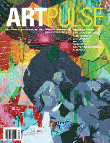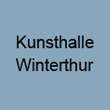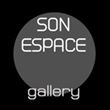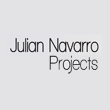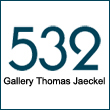« Editor's Picks
Luis Rafael Berríos-Negrón: Poetics of Silent Complexity
By Lukas Feireiss
Sites of Berlin and Kabul flickering on a small screen. Lateral worlds of imaginary time and space engaged in silent observations of void intensity. Speechless and abandoned. Relics of a fence interwoven with sprawling weeds and leaves. Lattices of living and nonliving structures superimposed not only on screen, but tangible as a physical matrix of bewildering dimensions.
In one of his latest shows ‘Nonspheres IV’ at PROGRAM - a Berlin-based gallery and initiative for art and architecture collaborations - Puerto Rican architect/artist Luis Rafael Berríos-Negrón nets with great precision an entire exhibition venue by establishing an enormous, well-defined web structure within the space. Composed of nearly two hundred individual tetrahedrons, the shape of the digitally pre-generated lattice incorporates more than eight hundred meters of synthetic rope. This apparently regular architecture produces a dynamically irregular space. Through a camera situated above the entrance the visitor is furthermore integrated, via green-room technology, into movies on display in an adjacent room. Multiple coexisting levels of varying complexity are to be found here which are more than the sum of their individual parts.
This delicate interplay between sensual and conceptual overlaying and interlacing is symptomatic of Berríos-Negrón’s work that distinguishes itself through his cautious yet all-consuming approach to space. The prevalent theme identified and discussed in his spatially-engaging installations is the critical and often geopolitically-charged confrontation of past and present, evolution and creation, nature and technology. ‘Nonspheres IV’ is his latest iteration of this ongoing investigation and finds its initial inspiration in the work of the early 20th century Russian-Ukrainian scientist, Vladimir Vernadsky, who is most noted for the assumption that life is a geological force that shapes the earth. The artist’s titular reference to Vernadsky’s concept of the nonsphere, a sphere of human thought that fundamentally transforms the biosphere in the last phase of the development of the Earth, is a critical one. In its complex diversity and irregularity Berríos-Negrón’s transversal Non-Sphere explicitly positions itself in stark contrast to the very idea of a sphere as a solid and symmetrical geometrical figure. Nothing is round and closed here, everything is open and seemingly endless. But what actually strikes you most about this work - despite its highly conceptual background and multi-facetted composition - is clearly its disarming spatial and haptical quality. Its poetic eccentricity expresses a shifting, multi-dimensional understanding of art and architecture and reveals the artist’s understanding of the dramaturgical and scenical effect of space.
The same circumambient sensitivity is perceptible in his earlier project ‘Verde que te quiero Verde’, which resulted from a workshop with Afghan art-student members of the Center for Contemporary Art of Afghanistan in Kabul. The intent of the workshop was to use the artwork not only as an exercise in creative dialogue, but also as a pedagogical mechanism to apply performative technologies as tools for transformation. The artistic intervention took place atop a visually and culturally-prominent hill in the center of Kabul, where a deserted and bullet-holed Olympic pool from the 1970’s recalled not only the country’s brief aspiration for sportive recognition on a international level, but also the location’s traumatic history as a strategic military site. Making use of the simplest methods to interact with the post-war urban landscape, Berríos-Negrón unfolds in this striking work a huge green garment that gently covers up the site’s still physically-present historical wounds and in a silent roar swells like a liquid wave, sending out a sign of hope into the surrounding debris of the city visible from far and wide.
In this way, Berríos-Negrón’s experimental work challenges and spreads well beyond disciplinary boundaries. At its core, the limitless value of the lived experience immanent throughout his work unifies through direct involvement. It thereby gains a transpersonal momentum that incites an almost infantile sensation of being sheltered in a boundless cosmos, even if one rejects every belief and every illusion.
Lukas Feireiss (Germany, 1977), attained his graduate education in Comparative Religious Studies, Philosophy and Ethnology in Berlin and Rome. As curator, writer and teacher he is deeply involved in the discussion of architecture, art and media beyond disciplinary boundaries on an international level.
Published by Wynwood. The Art Magazine, Vol. 1, No. 2, October 2007

